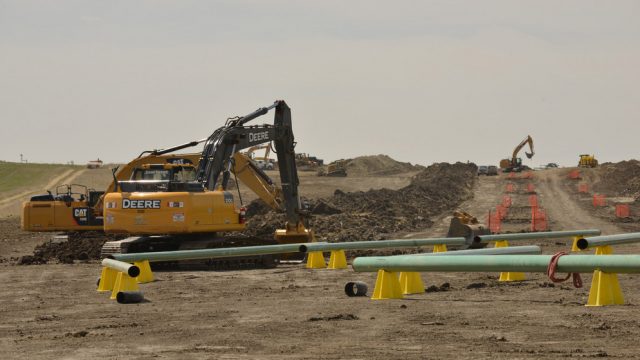Tessa Sandstrom: North Dakota's Remodeling Project Is Underway

Construction on the Highway 23 Bypasses around New Town and Watford City
As North Dakotans, we are all familiar with the adage that our great state has just two seasons: winter and road construction. Of course there is some truth to that adage. Summer is far too short, and we must cram a lot into it – weddings, BBQs, family reunions, fishing, golfing and boating, and more.
This sends many of us crisscrossing the state each summer, and a good portion of those trips are spent navigating through orange cones or waiting for a pilot car. For me, most of those trips take place in western North Dakota, and perhaps nowhere is that old adage more accurate.
Whether it’s the new bypass around Killdeer and expansions to Highway 22, enhancements on I-94 between Bismarck and Medora, Main Street improvements in New Town, or the expansion of Highway 85 between Williston and Alexander, infrastructure projects are underway. Many of these projects are thanks to the surge funding, passed by the Legislature and signed by Governor Dalrymple in February.
This bill has been a blessing in more ways than one. Those of us who traveled to or lived in western North Dakota prior to the boom can easily recall less than smooth roads. The infrastructure was aging and in less than great condition, but it served its purpose for a dwindling population in many rural towns.
[mks_pullquote align=”right” width=”300″ size=”24″ bg_color=”#ffffff” txt_color=”#000000″]As oil development picked up, it was difficult to see that progress being made, but with the recent slow-down, it’s amazing to see the changes.[/mks_pullquote]
With the influx of oil development, however, came the influx of people and, of course, vehicles and traffic. The roads built for a few dozen truckloads of grain each harvest couldn’t take the constant traffic associated with this new and growing industry. An area that had been stuck in an era of depopulation was now in the need of a new and modernized infrastructure.
Those improvements have been happening slowly, though surely. As oil development picked up, it was difficult to see that progress being made, but with the recent slow-down, it’s amazing to see the changes.
For years, even before oil activity picked up in western North Dakota, advocates had been pushing for the four-laning of Highway 85. Today, four lanes extend from Williston to Watford and it’s hard to say if that goal would have been reached without oil and gas development.
As thoroughfares to some of the best fishing on Lake Sakakawea, Highways 23 and 8 have always been busy roadways. In high school, they were roads we traveled frequently to see friends at Van Hook or go to ball games in Stanley or Parshall.
Even then they were a cause for concern to many parents. While they are a lot busier today, those roads are much safer. Passing lanes have helped ease some of the congestion, and wider lanes offer more reassurance for nervous drivers.
These and other upcoming projects are thanks in part to the foresight of our Legislature, Governor, county commissioners and local leaders. With falling oil prices, it may have been easy to err on the side of caution and postpone projects until prices improved.
The Surge Bill was appropriately named because it provided a surge of funding to assist with infrastructure. The name has become representative of all of western North Dakota where we have seen a surge of new vigor and growth.
Where our population was once aging, we’ve experienced an increase in more young people and new families moving to the area and more babies being born. We’ve seen a net gain in jobs—even with recent layoffs—where once so very few opportunities existed. We’ve watched as new businesses and retail outlets spring up almost overnight in communities where even grocery stores once struggled to remain open.
Yes, North Dakota is experiencing a surge that hasn’t been seen likely since it was a territory




